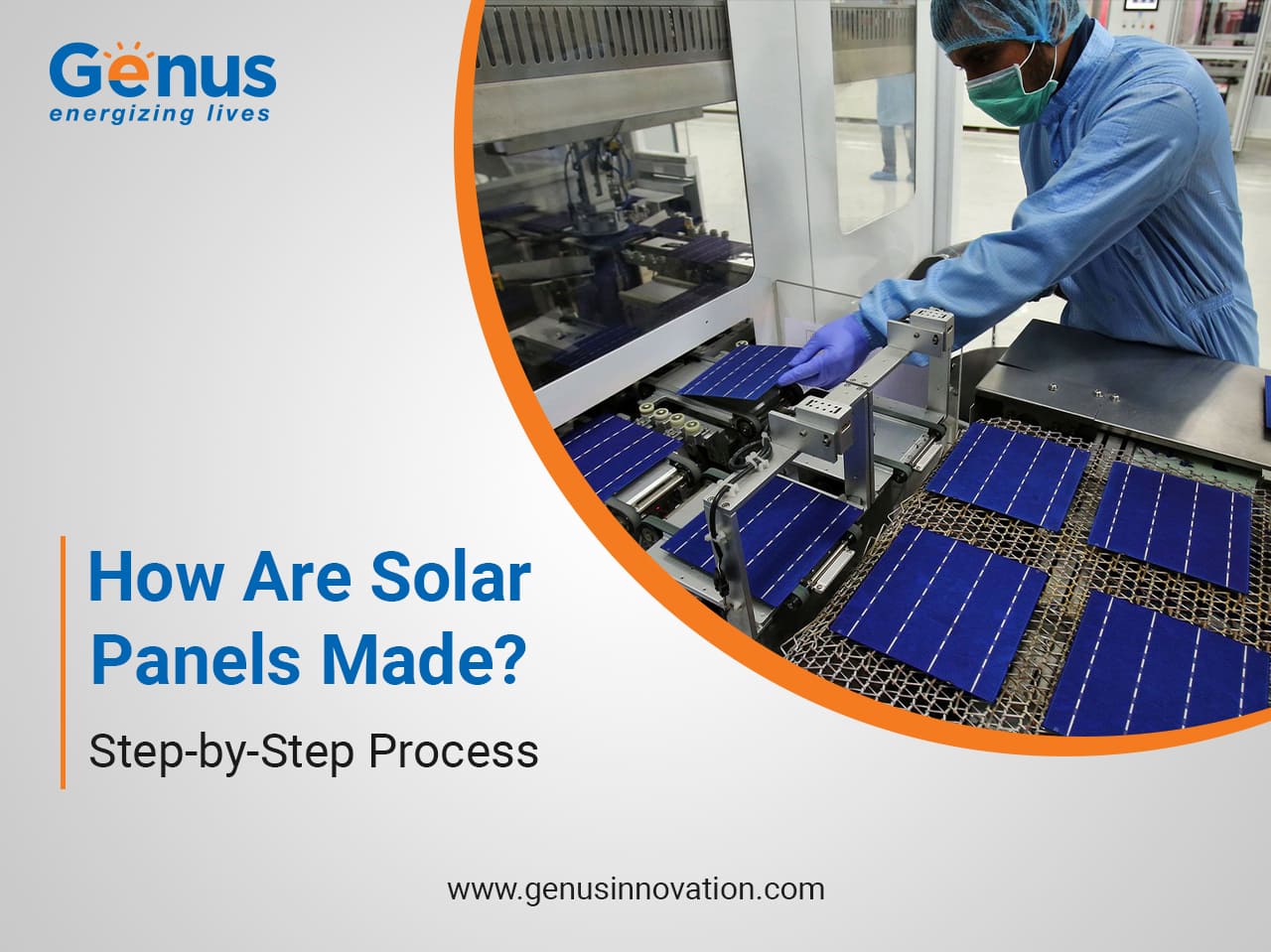
Solar panels may be effective at producing excess electricity, but how exactly are solar panels made? Manufacturing solar panels is a complicated process that requires extensive knowledge and understanding. In this blog, we will take you through the process of making solar panels and different types of panels available in the market.
Solar panels are made of monocrystalline or polycrystalline silicon solar cells, which are soldered together in groups and sealed under an anti-reflective glass cover. When light strikes the solar cells, the photovoltaic effect starts, thus generating electricity.
Solar panels are manufactured by putting together the six essential components that include, junction box, back seat, encapsulant, solar cells, tempered glass, and aluminum frame. Owing to recent research and developments in the solar energy industry, buying solar products for home has never been as easy as now.
Now that you know what components constitute a solar panel, let’s look into each step involved in making solar panels.

Let’s see how solar panels are made
-
Building The Solar Cells
Solar cells are the primary building blocks of a solar panel. Solar cells can either be p-type or n-type i.e., positively or negatively charged. Solar cells are made from crystalline silicon which is melted and mixed with gallium or boron to form wafers called silicon ingots.
Phosphorous is then added to silicon, along with gallium or boron, and these substances give silicon its electrical properties.
The silicon ingot is cut into thin sheets, and an anti-reflective coating is applied, which allows them to capture sunlight instead of reflecting it away from the structures. Thin current-conducting lines are then cut into the cells to capture and move the electrical current within the cell.
As a result, solar cells become conductors of electricity generated by the photovoltaic cells when sunlight falls on them making electrons drift within the solar cell to create electricity.
-
Soldering Solar Cells Together To Create A Solar Panel
Once phosphorus gives silicon wafers their electrical charge, metal connectors link each solar cell forming a solar panel. This process is known as soldering.
The number of cells soldered together at once depends on the need and requirements of each project. For instance, 60 cell-panels are the standard size while 72-cell panels are generally used in commercial projects.
-
Installing A Backsheet, Front Glass Layer, And Frame
Now that the front is built, what is the back of solar panels made of? The rear of a solar panel, known as a backsheet, is made of a plastic combination or polymer. A backsheet is installed at the bottom of the solar cells for protection.
A thin glass sheet is then installed on top of solar cells to filter the sunlight into solar cells. All these parts are held together by a glue called ethylene vinyl acetate (EVA). These components are secured to your roof by metal frames that latch onto the mounting clamps.
-
Installing The Junction Box
A junction box is attached to the structure using a sealant and left for curing for about 10-12 hours. The primary function of a junction box is to protect the wires of solar panels from damage in order to maintain the flow of electricity from solar panels to the inverter, preventing electricity flow in the reverse direction. Thus, junction boxes ensure the proper functioning of your solar panels.
-
Quality Testing
After that, each solar panel goes under quality tests to ensure the product meets the required criteria, including outputs, efficiencies, and any other technical specifications as promised by the manufacturer. Panels are put into a quality test at standard conditions to ensure electric current passes through the panels effectively.
Additionally, solar panels are tested to determine whether they can withstand intense weather conditions, heat, and general wear and tear. This ensures that you only get the best solar products for home. If it passes the test, it is ready for installation.
The manufacturing process for different types of solar panels is more of the same, but each has its own set of strengths.
What types of solar panels are there?
There are three main types of solar panel – monocrystalline, polycrystalline and thin-film panels. Monocrystalline panels are the most expensive yet efficient of all solar panels with an approximate efficiency of 15-20%.
Polycrystalline panels are generally cheaper than monocrystalline as they offer lesser efficiency. Thin film solar panels are lightweight and best suits unorthodox roof styles.
Summary
Solar energy is one of the best alternative energy sources to reduce our carbon footprints and rely less on fossil fuels at the same time. We recommend doing your own research and only purchasing solar technology solutions from a trusted company rather than relying on cheaper alternatives.
For years, Genus Innovation has provided high-quality solar panels and installation services to thousands of homeowners, helping them reduce their carbon footprint while lowering energy bills. Our experienced solar installers are dedicated to making your home energy environmentally responsible. Solar panels made by Genus are energy-efficient, cost-effective and environment-friendly.
Contact us and we will guide you through each phase of the process—from choosing the right type of solar panel to coordinating a clean installation.
